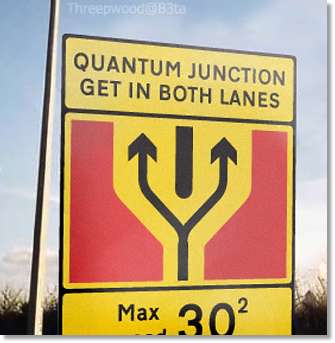It is difficult to accept that an object might be able to behave in two fashions, which, according to traditional logic, are mutually exclusive. How can the electron be localized as a particle and extended as a wave? Can it go through one slit and at the same time go through the other? However, ultimately, does it make sense at all to reason about the objects of Quantum Mechanics in the same way as we do about the common objects of our everyday experience ?
When dealing with the Quantum world we must accustom ourselves to “think different”. For instance, the most correct answer to the question whether the electron is wave or particle appears the one given by Richard Feynman: “it is neither”. In other words the electron, as well as light and other entities belonging to the atomic, subatomic, even molecular, world, are different things, namely quantum objects, and as such cannot be described by properties suitable for the description of classical objects, for instance bullets, billiard balls, etc. Quantum objects obey to a different physics, and to a different logic, which, although peculiar, work out well, to the extent that they are able to predict with good accuracy the outcome of the experiments.
The argument, with respect to practical aspects, could stop here. However, science invariably aimed at interpreting the observations of nature by means of models of reality based on on universally recognized and accepted principles. From this point of view the chasm between the classical and the quantum world, along with other characteristic aspects of Quantum Mechanics, (such as for instance the intrinsic casuality of events or the violation of the intuitive principles of realism and locality) are considered by many scientists unsatisfactory aspects. It is well known for example that Albert Einstein never accepted the vision of the world descending from the Copenhagen interpretation of Quantum Mechanics, the one considered to this day the “official” version, elaborated mainly by Niels Bohr and Werner Heisenberg. Albert Einstein, indeed, while appreciating the undeniable consensus it had achieved, considered Quantum Mechanics an incomplete theory. Other scientists after him questioned its validity, by attempting to interpret differently experiments such as the electron interference one.
Nowadays a number of interpretations of Quantum Mechanics coexist. On these the discussion, scientific as well as plilosophical, is ongoing, and a generally accepted conclusion does not seem to be around the corner. In this section we suggest a few cues to reflection, to stimulate the interest and curiosity of our readers on this fascinating and multifarious subject.
|


